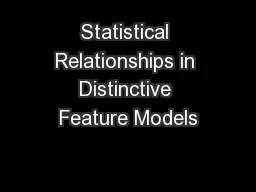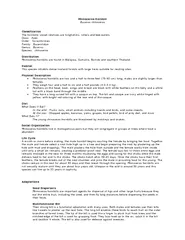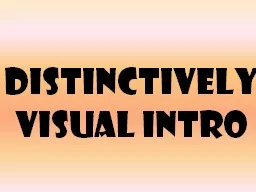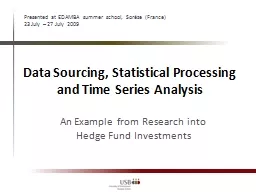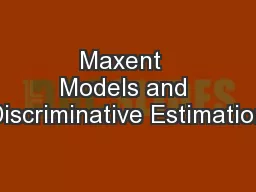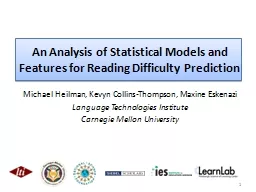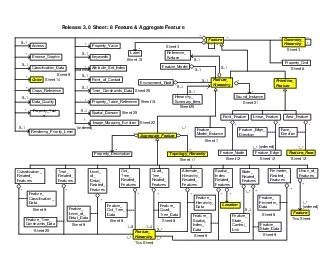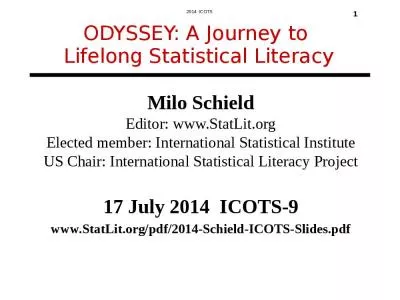PPT-Statistical Relationships in Distinctive Feature Models
Author : pamella-moone | Published Date : 2015-11-21
and AcousticPhonetic Properties of English Consonants Ken de Jong Noah Silbert Kirsten Regier amp Aaron Albin IU amp U Maryland These slides posted at http wwwindianaedulslConsPhtml
Presentation Embed Code
Download Presentation
Download Presentation The PPT/PDF document "Statistical Relationships in Distinctive..." is the property of its rightful owner. Permission is granted to download and print the materials on this website for personal, non-commercial use only, and to display it on your personal computer provided you do not modify the materials and that you retain all copyright notices contained in the materials. By downloading content from our website, you accept the terms of this agreement.
Statistical Relationships in Distinctive Feature Models: Transcript
Download Rules Of Document
"Statistical Relationships in Distinctive Feature Models"The content belongs to its owner. You may download and print it for personal use, without modification, and keep all copyright notices. By downloading, you agree to these terms.
Related Documents

